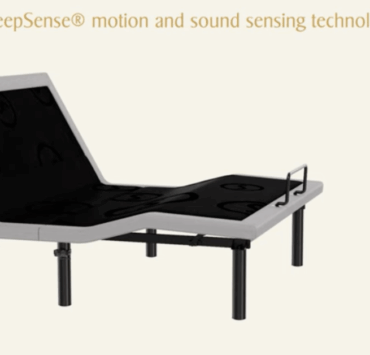In 1968, Charles Hall invented the waterbed as part of his master’s thesis at San Francisco State University. While he first played around with a chair filled with gelatin and cornstarch, it proved too heavy and smelly to be practical.
Needless to say, he had success with waterbeds. They reached peak popularity in the 1980s, with one in five beds sold in America being a waterbed at the time.
Now, over 50 years later, Hall’s nephew, Todd Youngblood, and his wif,e Tara, have created a modern spin on the waterbed with Geli Sleep.
The Youngbloods are not new to the mattress industry. Over the last 25 years, they have worked on product development projects for many major mattress brands in the market.
They most recently created Chilipad, a heating and cooling pad it sold direct-to-consumer. Tara—who is also a sleep scientist with a doctorate in functional medicine, holistic medicine and a Master’s in clinical psychology—says the company was a pioneer in bringing attention to the heating and cooling pad category in the mattress industry.

“I’ve done work with all branches of the military, studies for menopausal women over the years, and many others where I’ve been able to take a deep dive into sleep,” she says.
After Chilipad, the couple began their search for new opportunities. At one point, they thought about leaving the mattress industry altogether. Until one fun family Thanksgiving activity changed their minds.
The Youngbloods and their four sons went out to the woods to playfully shoot gel fire beads at each other. They are non-toxic, water-absorbing polymer beads that are small and dehydrated, but expand when soaked in water to become beads.
They burst on impact and are designed to be a mess-free alternative to other projectile-based toys. But Todd and Tara believed they would make a unique material for mattresses.
The patented gel technology of Geli Sleep differs slightly from generic gel beads, and what makes it distinct is the way in which the beads and tubes inside the bed are integrated into the mattress.
The proprietary water-activated beads conform to the body and create optimal spinal alignment, according to Tara. “And the technology is proven to deliver up to 49% greater pressure relief than traditional mattresses,” she says.

Inside the bed are sixteen different Geli tubes and beads, 8 on each side of the bed. They can be adjusted independently on each side of the bed, and they expand or contract by adding or removing water. The gel beads lock in water, so the mattress won’t leak.
“Right now we are doing global licenses with mattress manufacturers around the world,” Todd explains. “We have signed our first Canadian licensee and are looking for more. Our current retail distribution is with brick-and-mortar mattress retailers and DTC through gelisleep.com. We have about 15 retailers now, and we’ve been adding about one retailer a week so far.”
The company soft-launched at the Las Vegas Market this summer, and it will return in full force at the January show in the SSA Showroom.
“It’s time that the industry had some alternatives outside of the current technology that’s available in the market,” Todd says. “Everything is based on a poured gel, memory foam or springs. And we think that the market is looking for technology that can help provide a unique story for retailers and consumers about less conventional materials. We’re optimistic and think this has broad placement opportunities because of the benefits delivered by the technology.”
To answer everyone’s burning question, yes, Charles Hall has tried Geli Sleep’s mattresses and approves, according to Tara. He’s even on the company’s advisory board.



